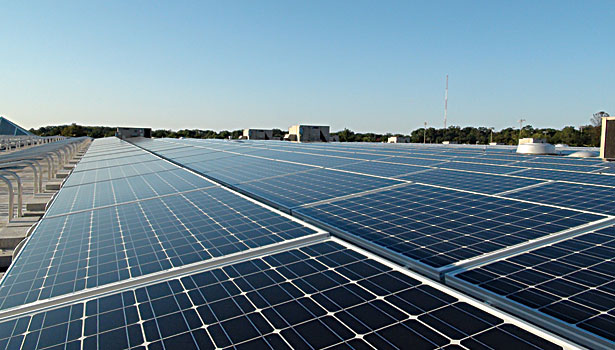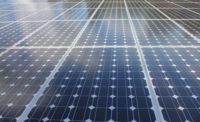Rising energy costs are forcing manufacturers to seek innovative ways to optimize energy consumption. This is the situation for Moorestown, NJ-based OPEX Corp., a material-handling-equipment manufacturer known worldwide for its mail-handling and document-imaging systems and sorters, and automated goods-to-person picking systems for warehousing.
Founded in 1973, OPEX has undertaken various initiatives over the past several years to reduce its energy consumption. The company installed energy-efficient fluorescent lighting in administrative offices and throughout its 250,000-square-foot manufacturing, warehouse and distribution areas. OPEX also installed motion-sensitive lighting in other areas and a computer-based system to run the company’s 100-plus rooftop HVAC units on a user-occupied basis.
By late 2009, OPEX began exploring solar energy as a way to further decrease its electricity usage. The company conducted a systematic analysis of the cost interdependencies and optimized energy benefits of converting to solar, taking into account the company’s long-term business and sustainability goals.
“As we started learning about solar, the potential of putting it into our operation began making good financial sense,” recalls Dave Andrews, facilities manager for OPEX. “The incentives looked really attractive, including a 30-percent rebate offered by the federal government at the time. We realized that it was something worth pursuing.”
Early in 2010, OPEX identified several prospective installers and sent out requests for proposals. That summer, the company selected H2 Contracting LLC, of Marlton, NJ, as general contractor to design and build the solar energy system. H2 provides construction management and general contracting for projects that emphasize renewable energy and sustainability.
Going into the project, OPEX’s traditional grid energy consumption was 2.589 million kilowatt-hours. The company wanted its solar-power system to generate 100 percent of the energy needed to operate its complex.
To meet OPEX’s specifications, H2 designed a 2.77-megawatt-output system. It consists of 8,372 solar panels (82,000 square feet) installed in a three-acre solar field array and mounted on the canopies and roofs of two buildings and two parking pavilions. Each panel can produce up to 250 watts of electricity. Within the parking pavilions, OPEX provides complimentary charging stations for employees who drive electric vehicles.
“It is not a typical design,” notes Mark Heenan, a LEED accredited professional and president of H2 Contracting. “Usually, solar arrays are set up with all of the panels facing in the same direction and with the same tilt. Because [they’re] mounted on multiple rooftops, canopies and a field array, the panels are situated in six different directions and with various tilts to better capitalize on available sunlight and space.”
Over the course of 12 months, the system ensures OPEX is a net-zero consumer of grid power. When the panels produce excess energy, it is put back into the grid. Conversely, when energy consumption exceeds that produced by the solar installation, the company supplements by drawing energy from the grid.
Completed in April 2012, the project is the largest solar installation in the state of New Jersey operated by a privately-held company. It is designed for an operational 25-year life span.
For more information on sustainable plant design, call 856-552-3118 or visit www.h2contracting.com.



